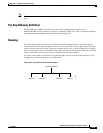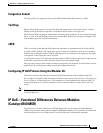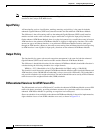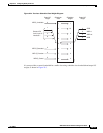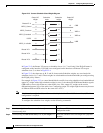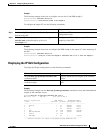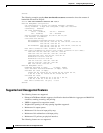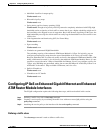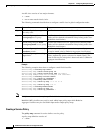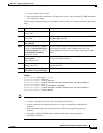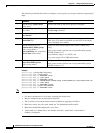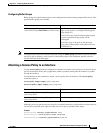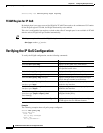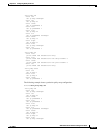
22-17
ATM Switch Router Software Configuration Guide
OL-7396-01
Chapter 22 Configuring Quality of Service
Configuring IP QoS on Enhanced Gigabit Ethernet and Enhanced ATM Router Module Interfaces
• Multifield classifiers in output policy
Workaround: none
• Hierarchical policy maps
Workaround: none
• Strict priority and low latency queueing (LLQ)
Workaround: Though strict priority and LLQ cannot be completely substituted with WFQ, high
bandwidth can be assigned to critical traffic to ensure that it gets a higher scheduling weight and is
the least likely to be dropped in case of congestion. But, in the absence of policing for this class, the
high bandwidth you assign for critical traffic can easily hog the bandwidth if excessive traffic is sent
on this class.
• Link fragmentation and interleaving (LFI) for Frame Relay
Workaround: none
• Egress marking
Workaround: none
• Limitation on guaranteed IP QOS bandwidth
The switching capacity of the enhanced ATM Router Module is 1 Gbps. So logically, you can
configure an output policy map where the sum of bandwidths of all classes can reach 1 Gbps.
However, Ethernet traffic is not the only traffic serviced by the enhanced ATM Router Module. ATM
traffic, which must be routed, is also serviced by the enhanced ATM Router Module. Hence, it is not
possible to reserve the entire 1 Gbps of bandwidth for Ethernet. Even if you configure a policy for
1 Gbps, only 500 Mbps are guaranteed, taking into account 500 Mbps for ATM. Only if there is no
ATM traffic is the entire 1 Gbps available for Ethernet, and vice versa.
• QoS for IP multicast
Workaround: none
• IP multicast on VC bundle
Workaround: none
Configuring IP QoS on Enhanced Gigabit Ethernet and Enhanced
ATM Router Module Interfaces
The IP QoS configuration requires the following three steps, which are detailed in this section:
Step 1 Defining a traffic class with a class-map command
Step 2 Creating a service policy by associating the traffic class with one or more QoS policies using the
policy-map command
Step 3 Attaching the service policy to the interface with the service-policy command
Defining a traffic class
The class-map command is used to define a traffic class.



